EPP foam has emerged as a cornerstone material in various industries, ranging from packaging and automotive to aerospace and beyond. Its unique properties, including excellent energy absorption, thermal insulation, and durability, have positioned it as a preferred choice for designers and engineers seeking innovative solutions.
In this article, we will delve into the complexity of the EPP foam manufacturing process, unleash the full potential of EPP foam, and shape a future of boundless imagination.
What is EPP foam made of?
Expanded Polypropylene (EPP) foam is primarily made of polypropylene beads, a type of thermoplastic polymer. These beads are expanded using steam and pressure during the manufacturing process, forming closed-cell foam structures characteristic of EPP foam.
Additionally, additives may be included during production to enhance specific properties of the foam, such as increased rigidity or flame resistance, depending on the intended application.
EPP Foam Manufacturing Process
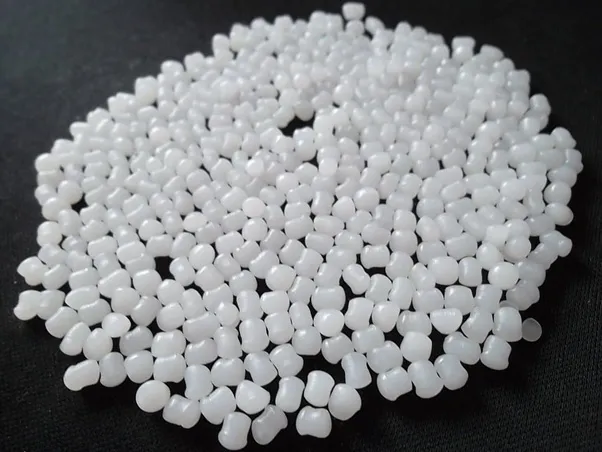
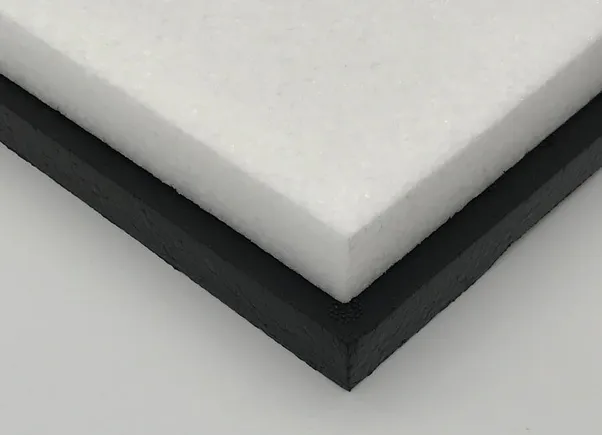
Step 1: Pre-Expansion
The pre-expansion stage is the foundational step in creating EPP foam. It begins with small, solid beads of polypropylene resin, typically containing a blowing agent like pentane. These raw beads are fed into a pre-expander, a large, agitated vessel designed to precisely control temperature and pressure. Steam is introduced into the pre-expander, providing the necessary heat to vaporize the blowing agent trapped within the polypropylene. As the blowing agent turns into a gas, it exerts internal pressure on the softened polypropylene, causing the beads to expand significantly in volume.
The degree of expansion during this phase is a critical determinant of the final density of the EPP foam. By carefully regulating the amount of steam, the duration of exposure, and the pressure within the pre-expander, manufacturers can control the size and density of the pre-expanded beads. This initial expansion creates the closed-cell structure that is characteristic of EPP foam and contributes to its lightweight nature. The uniformity of the pre-expanded beads is essential for ensuring consistent properties in the subsequent molding stage.
Following pre-expansion, the beads, now much larger and less dense, are discharged from the pre-expander. They are still relatively soft and contain residual blowing agent. This necessitates the next crucial step of conditioning to stabilize the expanded structure and prepare the beads for the final molding process. Without proper pre-expansion, achieving the desired density, cell structure, and ultimately, the performance characteristics of the EPP foam product would be impossible.
Step 2: Conditioning
The conditioning, or maturation, phase is a crucial intermediate step that ensures the stability and processability of the pre-expanded EPP beads. After leaving the pre-expander, the beads are transferred to large, well-ventilated silos or conditioning units. Here, they are allowed to cool down to ambient temperature, and air gradually diffuses into the closed cells created during the pre-expansion. This influx of air helps to equalize the internal pressure within the cells and stabilizes the expanded structure, preventing shrinkage or further uncontrolled expansion.
Simultaneously, any residual blowing agent trapped within the cell walls slowly dissipates and is replaced by air. The duration of the conditioning phase can vary depending on the desired final density and the specific grade of EPP being produced, typically ranging from several hours to a day or more. Proper conditioning is vital for achieving dimensional stability in the molded EPP parts, ensuring they maintain their shape and size after the molding process.
The conditioning process improves the flowability of the beads, making them easier to handle and feed into the molding machine. It also enhances the fusion characteristics of the beads during the molding stage, leading to a more uniform and structurally sound final product. Skipping or shortening the conditioning phase can result in inconsistencies in the molded parts, such as shrinkage, warping, or poor fusion between the beads, ultimately affecting the performance and quality of the EPP foam product.
Step 3: Molding
The molding stage is where the pre-conditioned EPP beads are transformed into the final desired shape. The beads are conveyed into a molding machine, which consists of a mold cavity precisely shaped to the specifications of the end product. Steam is then introduced into the mold under controlled pressure and temperature. This additional steam causes the pre-expanded beads to undergo a secondary, smaller expansion within the confines of the mold cavity, forcing them to tightly pack together and fuse at their contact points.
The application of heat and pressure during the molding cycle is carefully regulated to ensure proper fusion of the individual EPP beads. This fusion creates a strong, cohesive structure that replicates the shape of the mold. The cycle time, steam pressure, and temperature are all critical parameters that influence the density, surface finish, and mechanical properties of the final molded EPP part. Different mold designs allow for the creation of a wide variety of complex shapes and sizes, catering to diverse applications across industries.
The molding process essentially locks the expanded polypropylene into its final form, providing the structural integrity required for its intended use. Uniform heating and pressure distribution within the mold are essential for achieving consistent density and fusion throughout the part. Once the molding cycle is complete and the EPP has adequately fused, the next step involves cooling the mold to solidify the newly formed EPP part.
Step 4: Cooling and Demolding
Following the steam heating and fusion phase in the molding machine, the mold undergoes a cooling cycle. Typically, cold water is circulated through channels within the mold to rapidly reduce the temperature of the EPP part. This cooling process is crucial for solidifying the expanded polypropylene and ensuring that the molded part retains its desired shape and dimensional accuracy upon removal from the mold. Inadequate cooling can lead to deformation or shrinkage of the part after demolding.
Once the EPP part has sufficiently cooled and solidified, the mold opens, and the finished EPP foam component is ejected. Automated systems or robotic arms are often used for efficient and consistent demolding, especially for high-volume production. The demolded EPP part now has its final shape and a significant portion of its intended mechanical properties.
The cooling and demolding steps are critical for the overall efficiency and quality of the EPP foam manufacturing process. Proper cooling ensures dimensional stability and prevents defects in the final product, while efficient demolding contributes to faster cycle times and increased production output. The careful control of temperature and timing during these stages is essential for producing high-quality EPP foam parts that meet the required specifications.
Step 5: Post-Processing (Optional)
Depending on the specific application and the requirements of the end product, the molded EPP parts may undergo various post-processing steps. These additional stages are performed to refine the parts, prepare them for final use, or integrate them with other components. One common post-processing step is trimming, where any excess material, such as flash or sprue, that may have formed during the molding process is removed to achieve the final desired shape and dimensions.
Surface finishing can also be performed to enhance the aesthetic appeal or functionality of the EPP part. This might involve processes like painting, coating, or texturing. In many applications, particularly in the automotive industry, EPP components are often assembled with other parts, such as outer shells, mounting brackets, or energy management systems. This assembly process creates the final product that is ready for installation in a vehicle.
The specific post-processing steps required vary greatly depending on the intended use of the EPP foam part. For some simple packaging applications, minimal post-processing may be needed, while complex automotive safety components can undergo several finishing and assembly stages. These optional steps ensure that the EPP product meets the exact functional and aesthetic requirements of its final application, adding value and tailoring the material to specific industry needs.
EPP Shape Moulding Machine
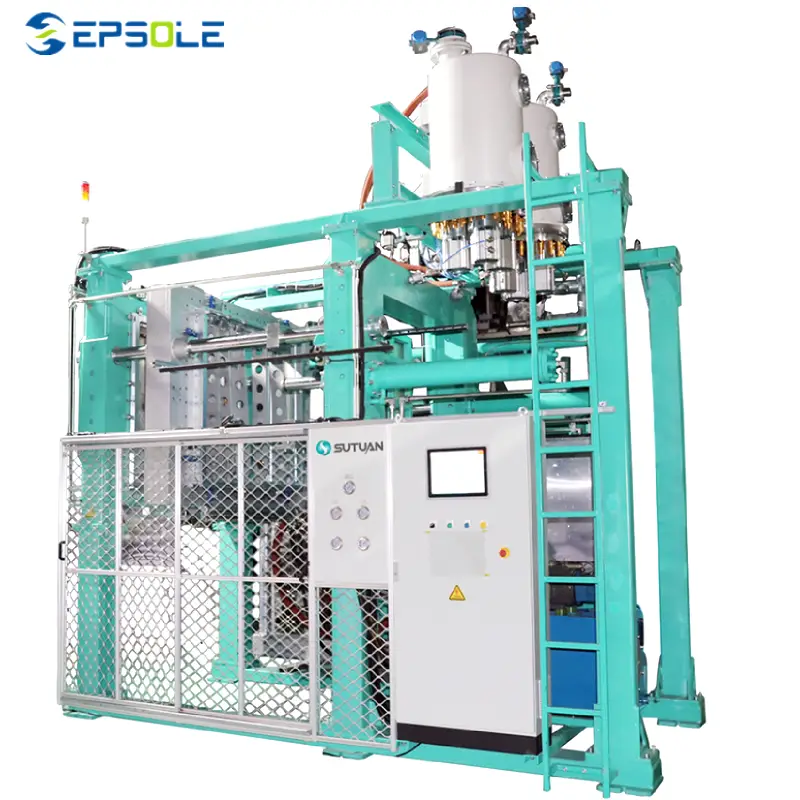
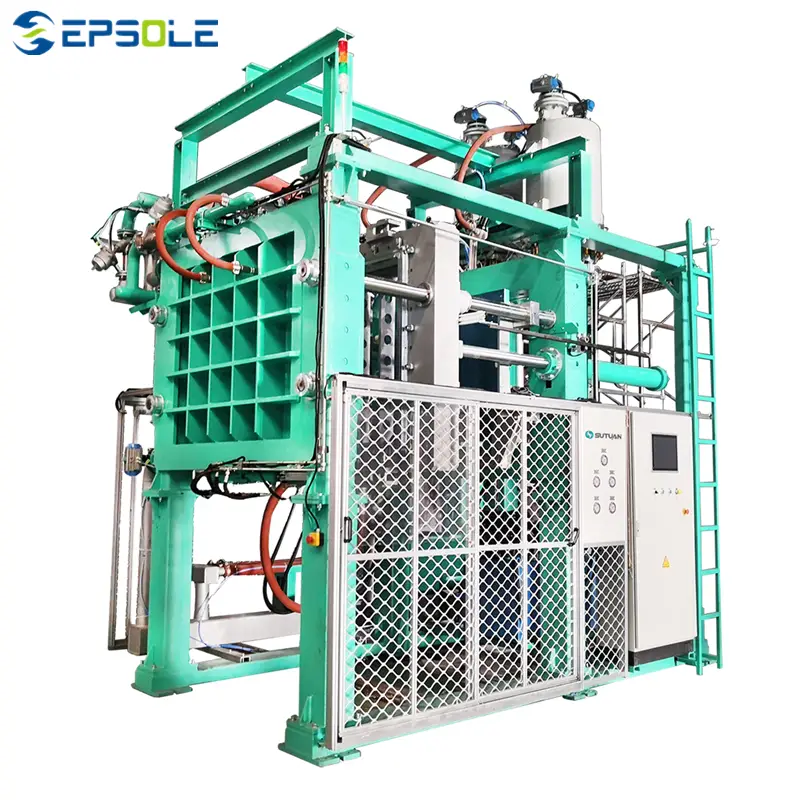
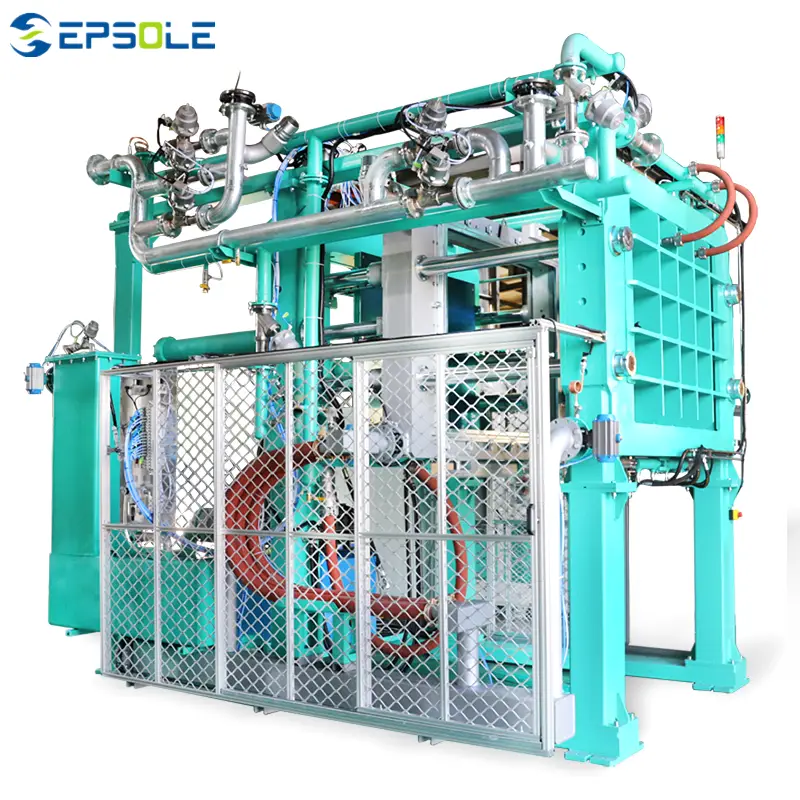
The EPS shape molding machine boasts excellent energy-saving features, leveraging advanced steam proportional pressure-reducing valve technology for precise control and stable steam pressure delivery. Its simple yet robust structure enhances stability and strength significantly.
Equipped with a specialized cooling system, this machine is vital due to its energy-efficient vacuum system technology, reducing energy consumption. The large-scale three-dimensional spray vacuum condensing machine further optimizes vacuum condensation, safeguards the vacuum water pump, and provides an intermediate vacuum interface for future needs.
Operating and controlling the EPS shape molding machine is straightforward, utilizing a user-friendly touchscreen interface for intuitive operation. Additionally, an integrated alarm system ensures systematic operator safety.
Technological Progress in EPP Foam Manufacturing
Automated Production:
EPP foam manufacturing has embraced automation, streamlining processes, and increasing production efficiency. Automated equipment and robotics handle tasks such as material handling, molding, and quality control, reducing human intervention and labor costs.
Intelligent Manufacturing Technology:
Integration of intelligent manufacturing technology has enhanced decision-making processes and optimized production workflows in EPP foam manufacturing. Advanced data analytics, artificial intelligence, and machine learning algorithms are utilized to optimize production parameters, predict equipment maintenance needs, and improve overall operational efficiency.
Environmentally Friendly Production Methods:
EPP foam manufacturing is adopting environmentally friendly production methods to minimize its ecological footprint. This includes the use of recycled materials, energy-efficient production processes, and waste reduction initiatives. Additionally, advancements in material recycling technologies are being explored to enable closed-loop production cycles, further enhancing sustainability in EPP foam manufacturing.
Benefits of EPP Foam
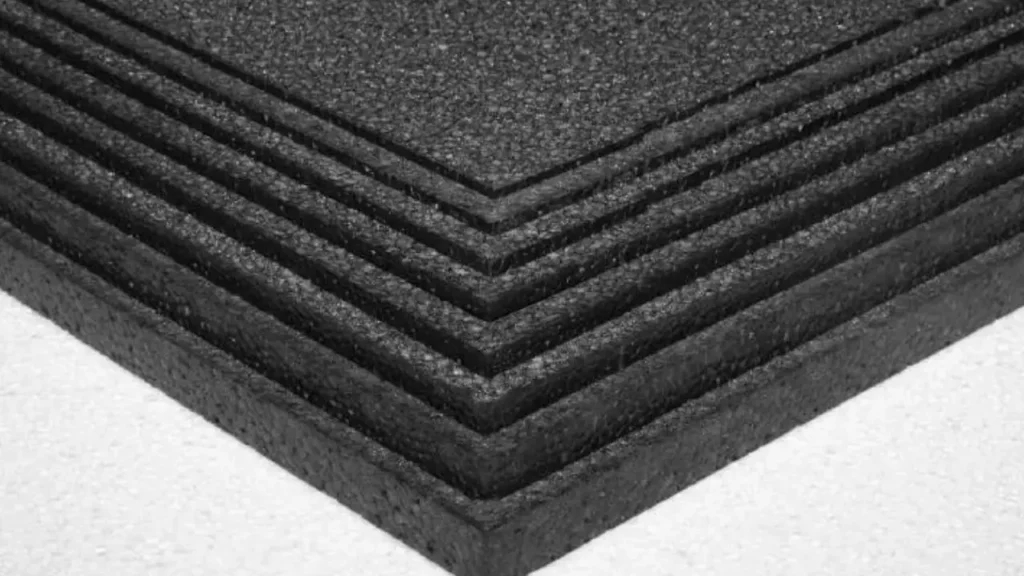
Expanded Polypropylene (EPP) foam is a versatile material known for its unique properties and wide range of applications. Here are some key properties of EPP foam:
Lightweight:
EPP foam is exceptionally lightweight, making it ideal for applications where weight is a concern. Despite its low density, EPP foam exhibits excellent strength and durability.
High Impact Resistance:
One of the most notable properties of EPP foam is its exceptional impact resistance. It can absorb and dissipate energy effectively, making it suitable for protective packaging, automotive components, sports equipment, and safety gear.
Elasticity and Flexibility:
EPP foam is highly elastic and flexible, allowing it to deform under stress and return to its original shape afterward. This property makes it resilient to repeated impacts and bending, enhancing its durability and longevity.
Thermal Insulation:
EPP foam has inherent thermal insulation properties, providing resistance to heat transfer. This makes it useful for applications requiring temperature control, such as insulated packaging, HVAC components, and automotive insulation.
Chemical Resistance:
EPP foam is resistant to many chemicals, oils, and solvents, making it suitable for applications where exposure to harsh substances is expected. This property ensures the durability and longevity of EPP foam products in various environments.
Water Resistance:
EPP foam exhibits excellent water resistance, preventing water absorption and degradation over time. This property makes it suitable for outdoor applications, marine environments, and water-resistant packaging solutions.
Buoyancy:
Due to its closed-cell structure and low density, EPP foam is inherently buoyant. It floats on water and can be used in marine applications such as flotation devices, buoys, and marine safety equipment.
Recyclability:
EPP foam is recyclable and can be reground and reused in the production of new foam products. Its recyclability contributes to sustainability efforts and reduces environmental impact compared to non-recyclable materials.
What Can EPP Make

EPP (Expanded Polypropylene) foam’s versatility allows it to be molded into a wide array of trending finished products, catering to diverse consumer and industrial needs. Its lightweight yet durable nature, coupled with excellent energy absorption, makes it an ideal material for various innovative applications.
Automotive Interior and Safety Components
EPP is increasingly popular in automotive interiors for creating lightweight and impact-absorbing components. Trending applications include dashboard cores that enhance safety during collisions, door panels designed for side-impact protection, and energy-absorbing headrests contributing to passenger comfort and safety regulations. Additionally, EPP is utilized in seat structures to reduce vehicle weight, aligning with the industry’s focus on fuel efficiency and electric vehicle range.
Reusable and Sustainable Packaging Solutions
With a growing emphasis on sustainability, EPP is a trending material for reusable and protective packaging. Molded EPP containers and inserts provide excellent cushioning and impact protection for electronics, medical devices, and sensitive equipment, offering a durable alternative to single-use packaging. Its ability to withstand multiple uses and its recyclability align with the demand for more environmentally friendly packaging solutions in various industries.
Lightweight Sports and Recreational Gear
The sports and leisure industry is increasingly adopting EPP for its lightweight and protective qualities. Trending products include high-performance bicycle and skateboard helmets offering superior impact absorption, buoyant life vests and flotation devices for water sports, and durable foam rollers and yoga blocks for fitness and rehabilitation. The material’s ability to withstand repeated impacts and its comfortable feel make it ideal for active lifestyle products.
Innovative Consumer Goods and Furniture
EPP is finding its way into various innovative consumer goods and furniture designs. Lightweight and durable storage boxes, organizers, and even modular furniture components are being manufactured using EPP. Its moldability allows for unique and ergonomic designs, while its durability ensures longevity. The material’s inertness and safety also make it suitable for children’s toys and play equipment, offering a safe and resilient option.
Geotechnical and Construction Applications
While not always a direct consumer product, EPP in the form of geofoam is a trending solution in construction and infrastructure. Its lightweight nature is utilized to create stable roadbeds over poor soil, lightweight fill for bridges, and for slope stabilization. This application reduces settlement issues and speeds up construction, showcasing EPP’s utility in large-scale engineering projects that ultimately benefit the public.
Conclusion
The EPP foam manufacturing journey, from the initial expansion of raw polypropylene beads to the final molded product, is a carefully orchestrated sequence of steps. Each stage, including pre-expansion, conditioning, molding, cooling, and optional post-processing, plays a vital role in achieving the unique properties that define EPP foam: lightweight nature, resilience, and energy absorption. Understanding this intricate process highlights the engineering behind this versatile material.
The precision and control exercised at each step directly influence the final characteristics of the EPP foam, making it suitable for a wide array of demanding applications across industries like automotive, packaging, and sports equipment. The ability to tailor the density and shape through this manufacturing process underscores EPP’s adaptability and its capacity to meet specific performance requirements.
Ready to incorporate the exceptional properties of EPP foam into your products? Contact us today for wholesale EPP foam materials and discover the possibilities. Our high-quality EPP solutions can provide the performance and reliability you need for your applications.
